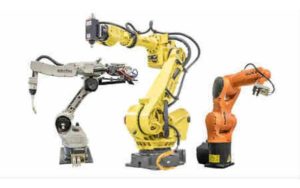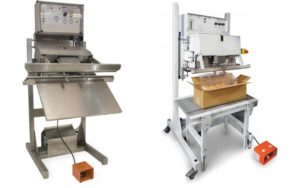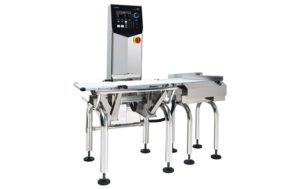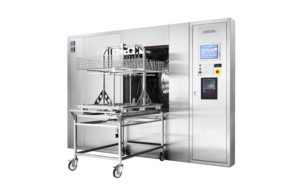The videos below are examples of the Can Seamers Frain Carries
Can Seamer Videos
Learn more about Can Seamers
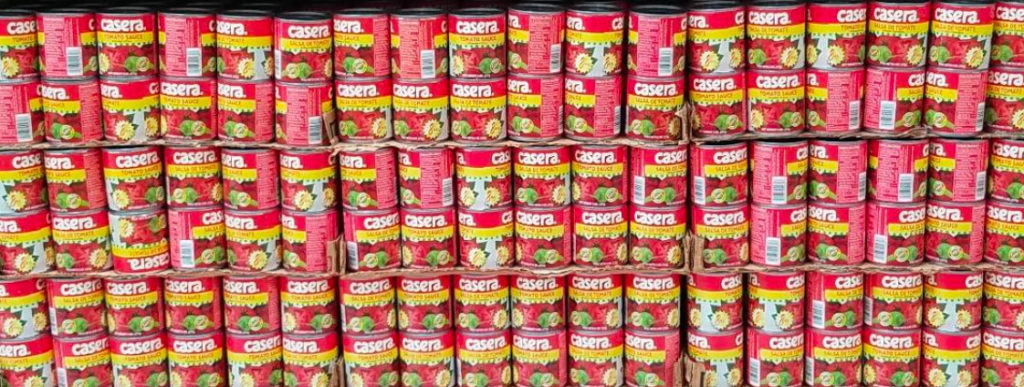
Canning Equipment and Seaming: Steel cans are the 2nd oldest type of packaging after glass and clay bottles. They are still popular today, especially for food but for many other products as well. They have a number of desirable characteristics including:
- Tamper resistant
- Rugged
- Easy to open
- Inexpensive
- Familiar to consumers and packagers
- Easy to run at high speeds (Up to 3,000 can per minute)
Originally cans were single seamed. The can lid or “end” was cupped, placed over the straight sided can body and soldered in place. Single seam cans are now rare. Virtually all cans are double seamed. The double seamed can seals by mechanical force with no need for potentially contaminating solder. Double seaming eliminates the time and complexity of soldering or welding body and end. Double seaming allows the use of dissimilar materials such as a plastic body with an aluminum end.
Cans are most frequently made of steel or aluminum but can be made of composite board as well as plastic. They are usually round but many products such as processed meat are packed in non-round cans.
In this whitepaper we will focus on round metal cans with double seamed ends. These may be 2 or 3 piece. A 2 piece can has a drawn can body and is most frequently made of aluminum. The second piece is the end seamed on after filling.
TO VIEW THE FULL WHITE PAPER: DOWNLOAD WHITE PAPER PDF
The term “can” refers to a container with a roll seamed lid, also called an end. Cans may be steel or aluminum, plastic, board or composite material. The may be 2 piece with the body and one end formed of a single piece or may be 3 piece with both ends seamed. They may have a straight sided, tapered or shaped profile. They are usually round but specialized machines can seam oval, square or other shapes. Can seaming machines run at speeds from a few cans per minute to several thousand. 1 head machines typically run at speeds up to 90cpm maximum depending on can and lid.
Cans enter the canning equipment (seaming machine) single file. They are synchronized with the seaming head via lug chain, starwheel or timing screw.
Once under the seaming head the lid is mechanically “seamed” to the can body in a 4 step process. Once sealed, cans can only be opened by cutting the seam, end or body. This makes cans highly tamper resistant.
The seaming process is:

1 – The can end is placed on the can body. Some can seamers do this before the can comes into the seaming station. Others, especially 1 head seamers, Shuttle the end horizontally out of a magazine and onto the can body when it is in the seaming station.
2 – It is generally easier to raise the can into the seaming rolls than lower the rolls onto the can. After the can and lid have been indexed under the seaming head it is pushed up against the pressure block. This pushes the body and lid tightly together.
Some seamers rotate the can against the seaming rolls. An alternative is to have the rolls in a large, spinning head which allows the can to remain stationary.
3 – The first seaming roll is pressed against the end. This causes the edge of the end to roll over the body flange forming a “hook”. At this point, the end and body are loosely joined.
4 – The second seaming roll irons the seam flat. This forces a tight seal between body and end. After the second seaming, the can is lowered and indexed out of the seamer.
Can seaming is a proven and inexpensive technology. It provides a rugged and tamper proof container for virtually any product.
Cans are one of the oldest, most reliable, versatile and cost effective packages in history. Originally the can lid or “end” was soldered to the can body. This slow, unreliable, process has been replaced by double seaming.
Double seaming is a purely mechanical 2 step process. It begins when the end is placed over the body. Both have formed lips or flanges. The end flange has elastomer sealant to provide a hermetic seal between end and body. Sufficient downforce must be applied to compress this seal
Once in place, a roller forms the body and end flanges into a “hook” (Step 3 in sketch) This locks the two together but does not seal them.
Once the hook has been completely formed around the end, a second roller irons the seam flat, forming the final seal.

Most cans are round and made of steel or aluminum. In addition to round cans, there are square, rectangular and other shapes. Plastic and composite paper cans are also common. The basic double seaming process is similar regardless of material or shape.
There are 2 main types of seamer available. High speed, over 150cpm or so, seamers rotate the can and force the hook and ironing rolls in and against it. Lower speed machines, up to 150cpm, use rotating seaming chucks.
The can is timed into the seamer via lug chain, starwheel, timing screw or a combination. Side clamps grip it to prevent spinning. Once in position under the head, an end is slid onto the can.
A spinning chuck contains the hooking and ironing rollers. In some seamers the can is raised into the chuck. In other designs the chuck is lowered onto the can. In either design, the chuck forces the end onto the body to deform the sealant for a good seal. Once the chuck in in place, a cam forces the 1st, hook, roller in. As the chuck spins, it forms the hook. The roller is retracted, and the 2nd, ironing, roller forced in to complete the seam.
The finished seamed can is discharged via conveyor.

Contact Your Engineer
Discuss your application directly with our qualified engineers.
